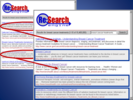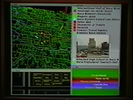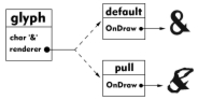






We describe OctoPocus, an example of a dynamic guide that combines on-screen feedforward and feedback to help users learn, execute and remember gesture sets. OctoPocus can be applied to a wide range of single-stroke gestures and recognition algorithms and helps users progress smoothly from novice to expert performance. We provide an analysis of the design space and describe the results of two experi-ments that show that OctoPocus is significantly faster and improves learning of arbitrary gestures, compared to con-ventional Help menus. It can also be adapted to a mark-based gesture set, significantly improving input time compared to a two-level, four-item Hierarchical Marking menu.


We present a new server-side architecture that enables rapid prototyping and deployment of mobile web applications created from existing web sites. Key to this architecture is a remote control metaphor in which the mobile device controls a fully functional browser that is embedded within a proxy server. Content is clipped from the proxy browser, transformed if necessary, and then sent to the mobile device as a typical web page. Users' interactions with that content on the mobile device control the next steps of the proxy browser. We have found this approach to work well for creating mobile sites from a variety of existing sites, including those that use dynamic HTML and AJAX technologies. We have conducted a small user study to evaluate our model and API with experienced web programmers.


Re-finding, a common Web task, is difficult when previously viewed information is modified, moved, or removed. For example, if a person finds a good result using the query "breast cancer treatments", she expects to be able to use the same query to locate the same result again. While re-finding could be supported by caching the original list, caching precludes the discovery of new information, such as, in this case, new treatment options. People often use search engines to simultaneously find and re-find information. The Re:Search Engine is designed to support both behaviors in dynamic environments like the Web by preserving only the memorable aspects of a result list. A study of result list memory shows that people forget a lot. The Re:Search Engine takes advantage of these memory lapses to include new results where old results have been forgotten.


The Web is a dynamic information environment. Web content changes regularly and people revisit Web pages frequently. But the tools used to access the Web, including browsers and search engines, do little to explicitly support these dynamics. In this paper we present DiffIE, a browser plug-in that makes content change explicit in a simple and lightweight manner. DiffIE caches the pages a person visits and highlights how those pages have changed when the person returns to them. We describe how we built a stable, reliable, and usable system, including how we created compact, privacy-preserving page representations to support fast difference detection. Via a longitudinal user study, we explore how DiffIE changed the way people dealt with changing content. We find that much of its benefit came not from exposing expected change, but rather from drawing attention to unexpected change and helping people build a richer understanding of the Web content they frequent.













Although mobile, tablet, large display, and tabletop computers increasingly present opportunities for using pen, finger, and wand gestures in user interfaces, implementing gesture recognition largely has been the privilege of pattern matching experts, not user interface prototypers. Although some user interface libraries and toolkits offer gesture recognizers, such infrastructure is often unavailable in design-oriented environments like Flash, scripting environments like JavaScript, or brand new off-desktop prototyping environments. To enable novice programmers to incorporate gestures into their UI prototypes, we present a "$1 recognizer" that is easy, cheap, and usable almost anywhere in about 100 lines of code. In a study comparing our $1 recognizer, Dynamic Time Warping, and the Rubine classifier on user-supplied gestures, we found that $1 obtains over 97% accuracy with only 1 loaded template and 99% accuracy with 3+ loaded templates. These results were nearly identical to DTW and superior to Rubine. In addition, we found that medium-speed gestures, in which users balanced speed and accuracy, were recognized better than slow or fast gestures for all three recognizers. We also discuss the effect that the number of templates or training examples has on recognition, the score falloff along recognizers' N-best lists, and results for individual gestures. We include detailed pseudocode of the $1 recognizer to aid development, inspection, extension, and testing.



When browsing a long video using a traditional timeline slider control, its effectiveness and precision degrade as a video's length grows. When browsing videos with more frames than pixels in the slider, aside from some frames being inaccessible, scrolling actions cause sudden jumps in a video's continuity as well as video frames to flash by too fast for one to assess the content. We propose a content-aware dynamic timeline control that is designed to overcome these limitations. Our timeline control decouples video speed and playback speed, and leverages video content analysis to allow salient shots to be presented at an intelligible speed. Our control also takes advantage of previous work on elastic sliders, which allows us to produce an accurate navigation control.



The Web is a dynamic information environment. Web content changes regularly and people revisit Web pages frequently. But the tools used to access the Web, including browsers and search engines, do little to explicitly support these dynamics. In this paper we present DiffIE, a browser plug-in that makes content change explicit in a simple and lightweight manner. DiffIE caches the pages a person visits and highlights how those pages have changed when the person returns to them. We describe how we built a stable, reliable, and usable system, including how we created compact, privacy-preserving page representations to support fast difference detection. Via a longitudinal user study, we explore how DiffIE changed the way people dealt with changing content. We find that much of its benefit came not from exposing expected change, but rather from drawing attention to unexpected change and helping people build a richer understanding of the Web content they frequent.